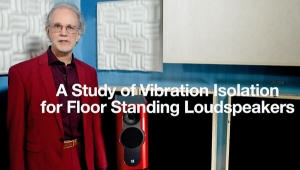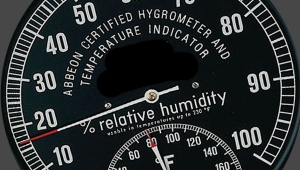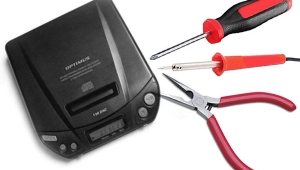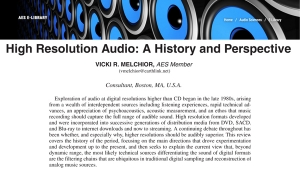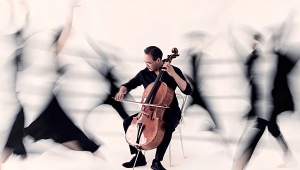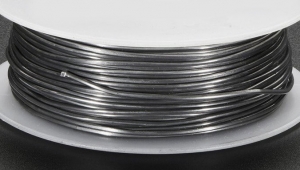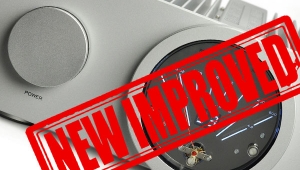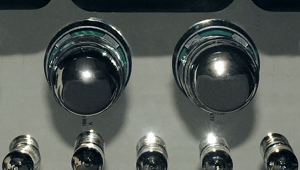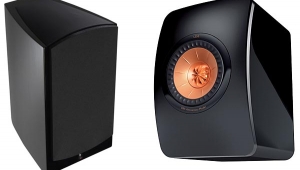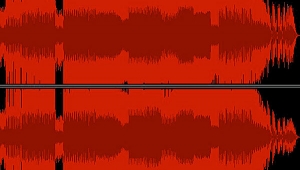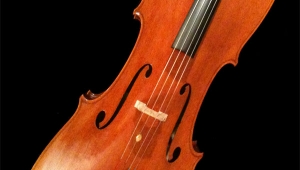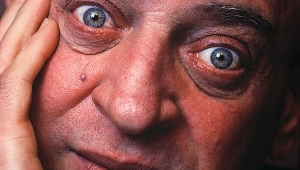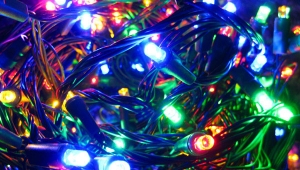| Columns Retired Columns & Blogs |
Painting Or Photography? Page 2
This sector of the music industry is becoming audiophile-friendly, no doubt. The real similarity between the two worlds, however, is the idea that underlies the booming interest in vintage equipment: There is no pure, distortion-free, and completely transparent way to capture the sound of a voice or instrument to tape or hard disk. Every piece of equipment in the signal chain contributes something to the sound. That's exactly why audiophiles care about cables, CD transports, even equipment stands and room treatments—potentially, everything matters.
What explains this convergence? Most musicians are not audiophiles, and no conference, magazine, or journal that I know of bridges high-end audio and the music industry. The convergence may be due simply to the fact that both camps are good listeners: one listens primarily to live instruments and performances, the other to recordings. Pop musicians are attuned to subtle differences between guitars, amps, and microphones, just as audiophiles discriminate between speaker cables or phono cartridges.
Now, with the home recording boom, musicians are listening to signal-processing equipment, monitors, and amplifiers as carefully as audiophiles do—it makes sense that they should come to speak the same language. A quick, nearly random flip through the home recording magazine Tape Op reveals such familiar nuggets as "signal degradation adds up quickly, especially when passing through cheap capacitors." (No.19, p.22) Advertising copy for microphones and preamps touts class-A circuitry and high-quality input transformers.
On the other hand, the convergence can perhaps be traced to larger cultural and intellectual trends. Many philosophers, historians, and sociologists say that one hallmark of our so-called "postmodern" culture is that all human creations—be they books, paintings, scientific theories, or musical recordings—express specific points of view, purposes, and values. None is fully objective, true, and unbiased. Indeed, how could a book or a theory avoid bias? That's what makes it a human creation in the first place.
According to this view, all knowledge is constructed. Poems and theories and paintings are not containers preserving inspiration fallen from the heavens, or information that lay waiting to be discovered. They aren't recordings, as it were, of objective information about nature or life. Their form and content are constructed by people in particular places and times who have their own beliefs, agendas, and struggles.
So it goes in the recording studio. The artist singing or playing behind the control-room glass (or, for project studios, in the bathroom down the hall) is not simply being recorded. He or she is supplying raw material for a sonic construction whose character is further determined by microphone choice and placement, by the kind of mike preamp used, and by a slew of other variables intervening between performance and final product. Even social and psychological dynamics among artists, engineers, and producers enter into the equation. It's about creating music and sound, not recording it. It's more like painting than photography.
At the other end of the signal chain, audiophiles work the same way. By choosing amplifiers, cables, and other components, by carefully placing speakers and room treatments, we tailor the sound in our listening rooms to suit our sonic desires. Take any handful of audiophiles (or go to an audio show) and it's obvious that different systems in different rooms sound different—sometimes drastically. Though we speak of sonic truth, total transparency, and accuracy, these ideals begin to sound hollow when you give them the knuckle-rap test.
What, exactly, would ideal, distortion-free recording (and playback) sound like? When you played such a recording through such a system and closed your eyes, you would be unable to tell whether your listening chair was in your living room or in Madison Square Garden, 50 rows away from AC/DC; whether you were relaxing at home or in the old CBS studios as Glenn Gould played Bach. No audiophile can honestly want sound that accurate and undistorted. Reality and illusion are different. Those who can't see the difference are not blissed-out audiophiles—they're insane.
In the recording studio and the listening room, the task is to create music with—not in spite of—the distortion-inducing tools at our disposal. That is the art and craft that join high-end audio to the world of recording. As a perspective on culture and communication, this axis gets my vote over the high-profile English professors (such as Stanley Fish) who celebrate the postmodern collapse of truth and objectivity in bold, broad strokes—as if superstitions are, in the end, no better than modern science; as if Shakespeare has nothing over fairy tales. Distortion and bias may be universal, but that doesn't mean that all books, plays, theories, or recordings are on a par. Some are better than others. Ask any audiophile or recording engineer.
- Log in or register to post comments
